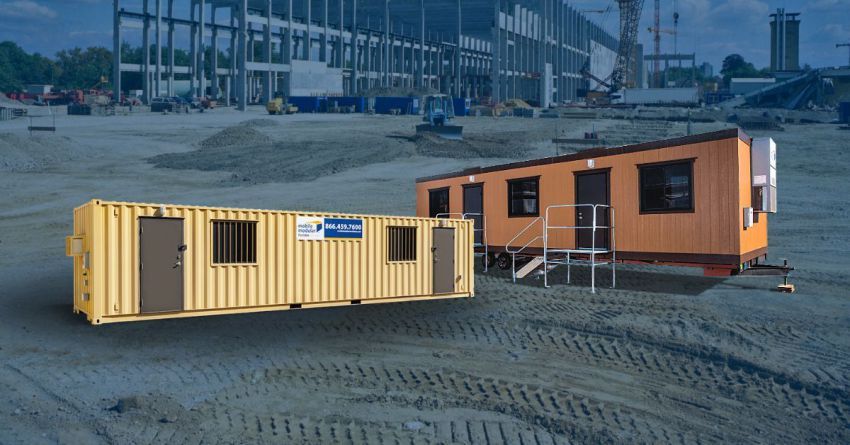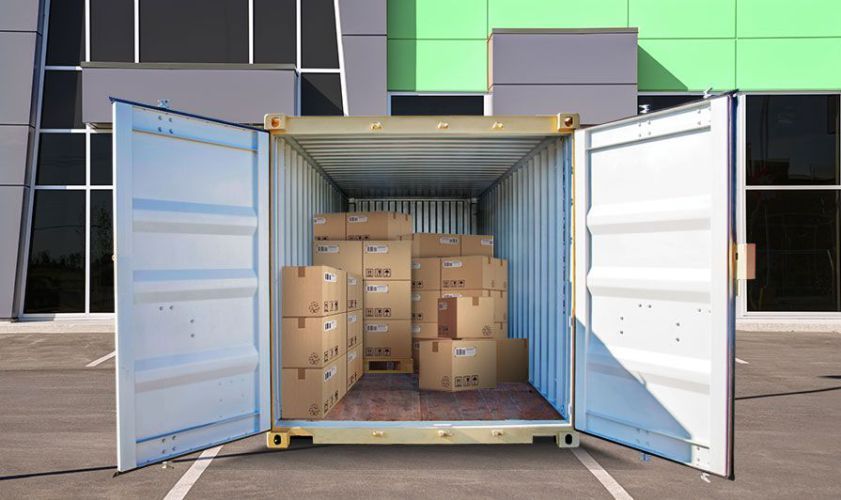- Rent, Lease, or Purchase
- |
May 19, 2021
Shipping Container Air Conditioning, Heating, and Ventilation
Storage containers can serve different purposes. Whether you've converted your unit into a functional office space or are using it for equipment storage, it's important to maintain your shipping container at a comfortable temperature.
Installing heating, ventilation, and air conditioning will keep employees comfortable and productive throughout the day. Meanwhile, climate control options can protect valuable goods that need to stay within a set temperature range. Keep reading to learn more about the different options available.
Different Types of HVAC Systems
Window Air Conditioners
A shipping container window air conditioner is one of the most common climate control options available. These units are commonly utilized and can be installed independently. Though often used for residential applications, these units are also a great option for container offices, pop-up shops, security checkpoints, and more. Both heating and cooling options are available.
Through-Wall HVAC
A through-wall HVAC unit is a more powerful cooling system for storing industrial equipment that emits heat and needs to stay at a certain temperature.
This is also a convenient solution for mini storage applications where the container is split into multiple sections. Because these units are installed on the exterior, they free up more space inside the shipping container.
Louver Vents
Louver vents help air to pass naturally through your container. These shipping container vents contain horizontal slats that introduce air and light while preventing unwanted elements like water, dirt, and debris from entering your structure.
Roof Turbine Vents
Turbine vents are a cost-effective method of keeping containers in good shape. They can be mounted anywhere on the roof. The turbines will spin with the breeze and vacuum air out of your container. You can have multiple vents installed to prevent rust, mold, and foul odors from entering your container.
Baseboard Heaters
If you need to install heating due to severe winters or below-freezing temperatures, we recommend investing in baseboard heaters. This kind of heating revolves around electric elements installed in metal pipes. Cold air is drawn into the baseboard, warmed electrically, and then released back into the container.
Conclusion
Whether you live in an extreme climate or simply need a way to ventilate your container, climate control is a must. Mobile Modular Portable Storage is happy to provide HVAC heating, cooling, and venting options on our standard-sized shipping containers. Contact our in-house team of experts at 866.459.7600 to learn more or fill out this form to request a quote.
Frequently Asked Questions
Do Container Homes Get Hot?
The temperature inside your shipping container naturally fluctuates with the weather. If you live in a warm climate, you can expect your container to get hot, especially during peak sun.
To keep things at a cool, comfortable temperature, you can install a window AC unit. You can also install shades, box fans, or incandescent lighting to help keep your container cool.
What Size AC Do You Need for a Shipping Container?
The size of your air conditioning unit will depend on your container's size and the space available in the interior.
A 12,000 BTU unit is typically installed to cool a room of up to 400 square feet, though you may want to look at other options if you live in a harsh climate. Commercial through-wall HVAC systems will be more effective in combating extreme temperatures.
Are Air-Conditioned Containers Available for Rent?
Mobile Modular Portable Storage offers climate-controlled insulated containers for rent and sale. This option is available for our 10-foot, 20-foot, and 40-foot standard containers.
Related Blogs



Subscribe to Our Blog
Enter your email address to subscribe to the blog and receive the notification of new posts by email.
Thank You for Subscribing to Our Blog!
Stay tuned for upcoming emails with valuable content that we hope will enhance your experience with our brand.
Both Pardot and mg360 form submissions failed.
